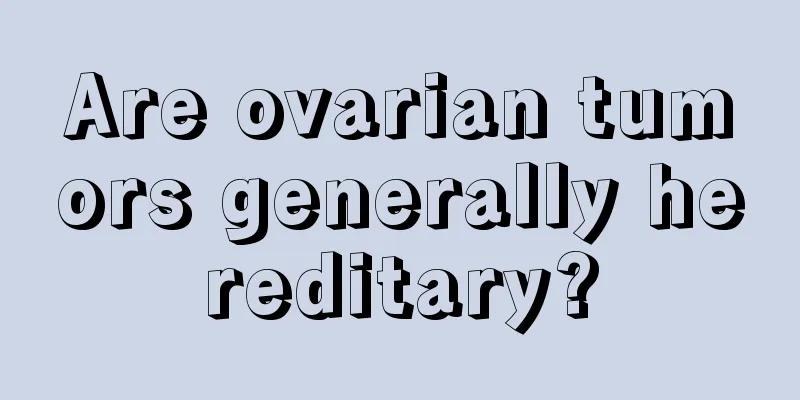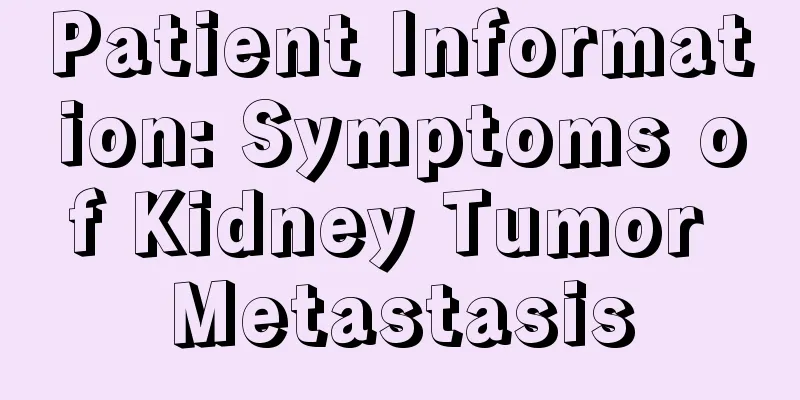Are ovarian tumors generally hereditary?

|
Ovarian tumors may be related to genetics, environmental factors such as high-cholesterol diet and industrial pollution, endocrine factors, the relationship between ovulation and carcinogenesis, endogenous stimuli and the physiological position of the ovary, gonadotropin stimulation, immune dysfunction, radiation, etc., which cause ovarian epithelial tumors, ovarian germ cell tumors, ovarian sex cord stromal tumors, and ovarian metastatic tumors. 1. Genetic and family factors Possible genetic factors of human ovarian tumors. It is found that many people with primary tumors in other parts (especially breast cancer) are associated with ovarian cancer. Tumor occurrence has innate factors, which may be due to immune dysfunction. Several families have been reported to have a tendency to develop mesothelioma, breast cancer or ovarian cancer. 2. Nutrition and socioeconomic status Improved nutrition and socioeconomic conditions are associated with an increased incidence of ovarian cancer. The incidence of ovarian cancer in the first generation of Japanese immigrants to the United States is higher than that of women who have lived in Japan for generations. 3. Environmental factors The high incidence of ovarian cancer in industrially developed countries may be related to high-cholesterol diet and industrial pollution. 4. Endocrine factors The average number of pregnancies in ovarian cancer patients is low, and the incidence is higher in non-pregnant women, which shows that pregnancy may protect women from or reduce the incidence of ovarian cancer, because stopping ovulation during pregnancy can reduce ovarian epithelial damage. Ovarian cancer often occurs in women with few pregnancies and non-pregnant women, which also shows this point. Early childbearing, early menopause and the use of oral contraceptives are protective factors for ovarian cancer. The chance of breast cancer and endometrial cancer combined with functional ovarian cancer is twice that of ordinary women, which shows that all three are hormone-dependent tumors. 5. Relationship between ovulation and cancer Malnutrition can reduce the number of ovulations. In fact, ovulation is an important carcinogenic factor. Periodic ovulation repeatedly causes damage and stimulation to the ovarian mesothelium, and also lacks a persistent physiological recovery period. This can explain why the ovarian mesothelium has a tendency to malignant transformation compared to the peritoneum. Ovulation also produces defects and unevenness on the ovarian surface, which easily forms ovarian mesothelial closed cysts, allowing carcinogenic factors to accumulate and stay there for a long time and attach to the mesothelium. |
<<: Are ovarian tumors generally hereditary?
>>: Is ovarian tumor also a genetic disease?
Recommend
HPV6 positive, no warts
HPV is a disease with a relatively high incidence...
Advantages of thyroid cyst removal surgery
Thyroid cyst is a very serious disease, so patien...
What to do if you have stomach cancer? There are three treatments
Gastric cancer will have a great impact on the pa...
Choose the surgical method according to the different degree of gallbladder cancer
Gallbladder cancer causes great harm to the patie...
Commonly used drugs for malignant hamartoma
Hamartomas are generally benign tumors, but a sma...
Ginseng mask benefits
With the progress of the times, people pay more a...
How to prevent hamartoma
Although many people are unfamiliar with the dise...
There are white stripes on the body
In life, many people will find some growth lines ...
How to eat during lung cancer recovery? Five principles of dietary care during lung cancer recovery period
Lung cancer is a malignant tumor. If it is treate...
Is it a big deal if the alpha-fetoprotein is 500? Don't be too nervous, it may not be liver cancer
Alpha-fetoprotein is a very common item in the ph...
What are the effective care methods for pituitary tumors
For a disease like pituitary tumor, we must not d...
How to choose a pillow core
Everyone knows that pillow cores are something we...
Is it good to drink white tea in summer?
White tea has many functions and effects that are...
How to remove mildew spots on clothes
Many people do not pay much attention to the care...
What should I do if my gums are swollen and painful?
Swelling and pain at the root of the gums is a co...









